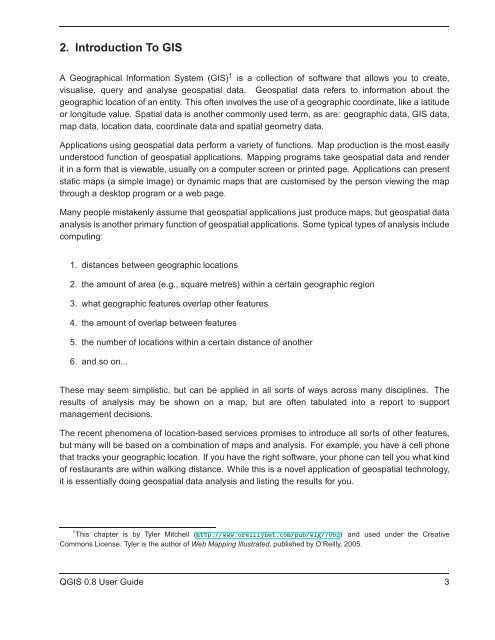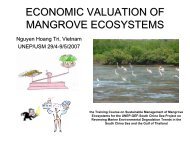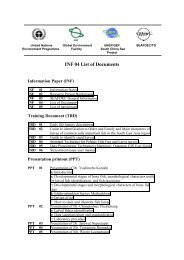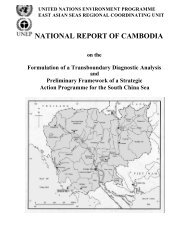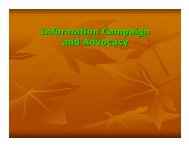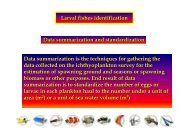TRD 05: Data Presentation techniques (Mapping) Quantum GIS ...
TRD 05: Data Presentation techniques (Mapping) Quantum GIS ...
TRD 05: Data Presentation techniques (Mapping) Quantum GIS ...
Create successful ePaper yourself
Turn your PDF publications into a flip-book with our unique Google optimized e-Paper software.
2. Introduction To <strong>GIS</strong><br />
A Geographical Information System (<strong>GIS</strong>) 1 is a collection of software that allows you to create,<br />
visualise, query and analyse geospatial data. Geospatial data refers to information about the<br />
geographic location of an entity. This often involves the use of a geographic coordinate, like a latitude<br />
or longitude value. Spatial data is another commonly used term, as are: geographic data, <strong>GIS</strong> data,<br />
map data, location data, coordinate data and spatial geometry data.<br />
Applications using geospatial data perform a variety of functions. Map production is the most easily<br />
understood function of geospatial applications. <strong>Mapping</strong> programs take geospatial data and render<br />
it in a form that is viewable, usually on a computer screen or printed page. Applications can present<br />
static maps (a simple image) or dynamic maps that are customised by the person viewing the map<br />
through a desktop program or a web page.<br />
Many people mistakenly assume that geospatial applications just produce maps, but geospatial data<br />
analysis is another primary function of geospatial applications. Some typical types of analysis include<br />
computing:<br />
1. distances between geographic locations<br />
2. the amount of area (e.g., square metres) within a certain geographic region<br />
3. what geographic features overlap other features<br />
4. the amount of overlap between features<br />
5. the number of locations within a certain distance of another<br />
6. and so on...<br />
These may seem simplistic, but can be applied in all sorts of ways across many disciplines. The<br />
results of analysis may be shown on a map, but are often tabulated into a report to support<br />
management decisions.<br />
The recent phenomena of location-based services promises to introduce all sorts of other features,<br />
but many will be based on a combination of maps and analysis. For example, you have a cell phone<br />
that tracks your geographic location. If you have the right software, your phone can tell you what kind<br />
of restaurants are within walking distance. While this is a novel application of geospatial technology,<br />
it is essentially doing geospatial data analysis and listing the results for you.<br />
1 This chapter is by Tyler Mitchell (http://www.oreillynet.com/pub/wlg/7<strong>05</strong>3) and used under the Creative<br />
Commons License. Tyler is the author of Web <strong>Mapping</strong> Illustrated, published by O’Reilly, 20<strong>05</strong>.<br />
Q<strong>GIS</strong> 0.8 User Guide 3


